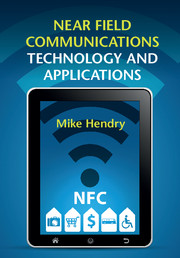Book contents
- Frontmatter
- Contents
- Part I Introduction
- Part II Technology
- 3 Standards
- 4 Modes of operation
- 5 RF requirements and components
- 6 The Secure Element
- 7 Tags and terminals
- 8 NFC apps
- 9 Infrastructure requirements
- 10 Security
- 11 Interoperability
- Part III Applications
- Part IV Implementation
- Appendix A Glossary
- Appendix B Standards
- Index
- References
3 - Standards
from Part II - Technology
Published online by Cambridge University Press: 05 December 2014
- Frontmatter
- Contents
- Part I Introduction
- Part II Technology
- 3 Standards
- 4 Modes of operation
- 5 RF requirements and components
- 6 The Secure Element
- 7 Tags and terminals
- 8 NFC apps
- 9 Infrastructure requirements
- 10 Security
- 11 Interoperability
- Part III Applications
- Part IV Implementation
- Appendix A Glossary
- Appendix B Standards
- Index
- References
Summary
Structure and scope
The role of standards
Standards are important for all kinds of products and services: in some cases they are needed for safety, to ensure an adequate quality control or just to distinguish between different grades of product (e.g. military, industrial or consumer).
For communication products, however, standards are needed to ensure that devices and systems work together: two devices that meet the same standard, even from different manufacturers, should in principle be able to communicate. Proprietary products, which meet only a specification designed by their manufacturer, are unlikely to be able to communicate with other manufacturers’ products.
However, the simple statements in the previous paragraph have to be treated with some caution: a manufacturer can design a product specifically to work with another’s, although it risks breaching some Intellectual Property (IP) rights in the process. Standards can allow options: for example, the NFC standard describes three modes of operation, three anti-collision mechanisms and four card emulations; two devices must implement the same options to allow communications between them.
There may be different levels of standard, each with a different scope. We can imagine a telephone link between China and the United States of America.
A series of cables, fiber-optics or radio links must be connected to allow an electrical, optical or virtual connection from end to end.
The telephones must be compatible so that voices can be heard at the other end.
The users must agree to speak the same language, or must understand each other’s language.
And finally they must each understand the point the other is trying to make, which may involve jargon or some advance knowledge.
- Type
- Chapter
- Information
- Near Field Communications Technology and Applications , pp. 21 - 31Publisher: Cambridge University PressPrint publication year: 2014



